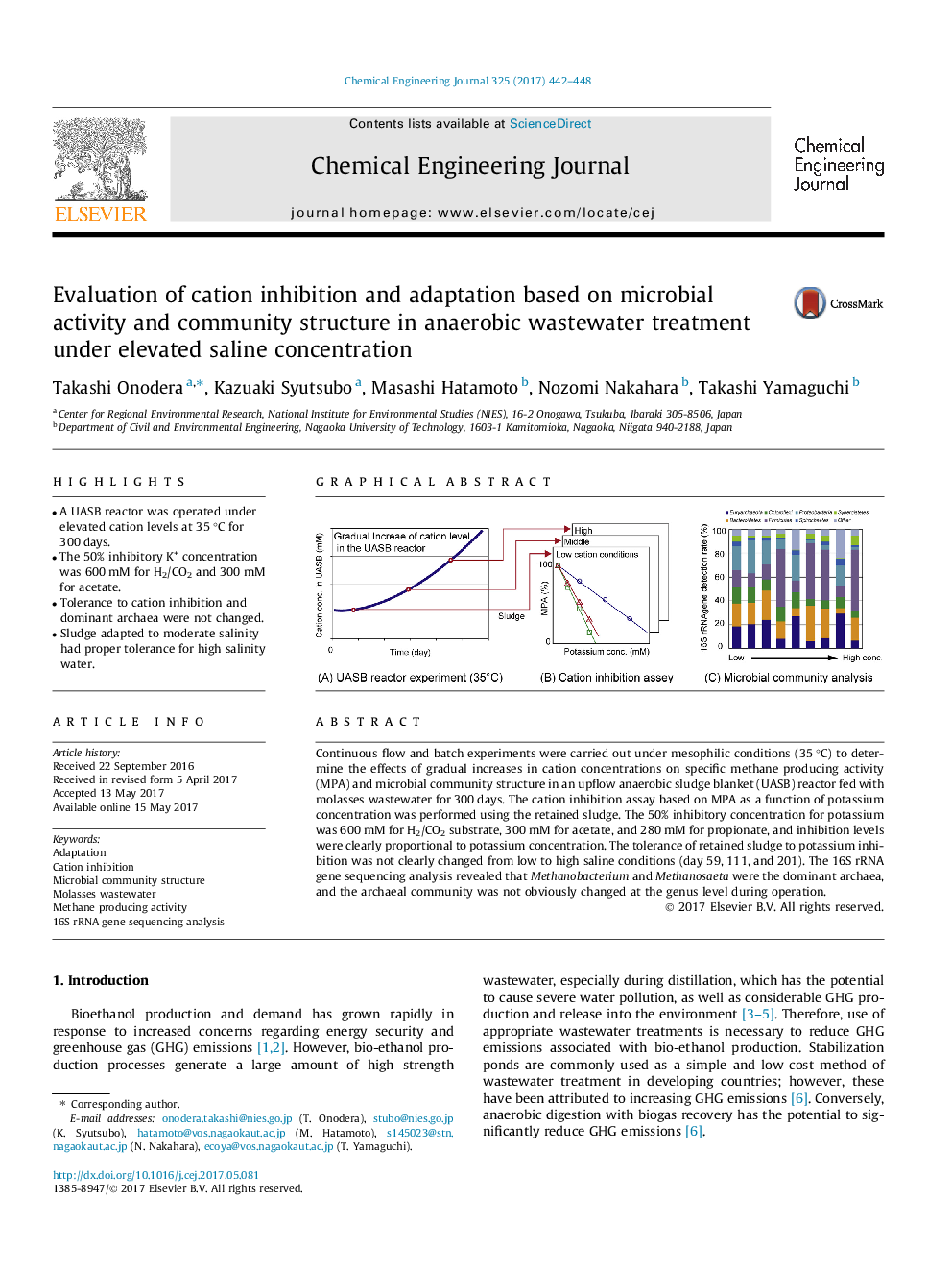| کد مقاله | کد نشریه | سال انتشار | مقاله انگلیسی | نسخه تمام متن |
|---|---|---|---|---|
| 6466128 | 1422953 | 2017 | 7 صفحه PDF | دانلود رایگان |
- A UASB reactor was operated under elevated cation levels at 35 °C for 300 days.
- The 50% inhibitory K+ concentration was 600Â mM for H2/CO2 and 300Â mM for acetate.
- Tolerance to cation inhibition and dominant archaea were not changed.
- Sludge adapted to moderate salinity had proper tolerance for high salinity water.
Continuous flow and batch experiments were carried out under mesophilic conditions (35 °C) to determine the effects of gradual increases in cation concentrations on specific methane producing activity (MPA) and microbial community structure in an upflow anaerobic sludge blanket (UASB) reactor fed with molasses wastewater for 300 days. The cation inhibition assay based on MPA as a function of potassium concentration was performed using the retained sludge. The 50% inhibitory concentration for potassium was 600 mM for H2/CO2 substrate, 300 mM for acetate, and 280 mM for propionate, and inhibition levels were clearly proportional to potassium concentration. The tolerance of retained sludge to potassium inhibition was not clearly changed from low to high saline conditions (day 59, 111, and 201). The 16S rRNA gene sequencing analysis revealed that Methanobacterium and Methanosaeta were the dominant archaea, and the archaeal community was not obviously changed at the genus level during operation.
183
Journal: Chemical Engineering Journal - Volume 325, 1 October 2017, Pages 442-448
